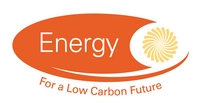Projects
Projects: Projects for Investigator |
||
| Reference Number | EP/M014142/1 | |
| Title | Control of structure, strain and chemistry: a route to designer fuel cell interfaces | |
| Status | Completed | |
| Energy Categories | Hydrogen and Fuel Cells(Fuel Cells, Stationary applications) 50%; Hydrogen and Fuel Cells(Fuel Cells, Mobile applications) 50%; |
|
| Research Types | Basic and strategic applied research 100% | |
| Science and Technology Fields | PHYSICAL SCIENCES AND MATHEMATICS (Metallurgy and Materials) 100% | |
| UKERC Cross Cutting Characterisation | Not Cross-cutting 100% | |
| Principal Investigator |
Dr SJ Skinner No email address given Materials Imperial College London |
|
| Award Type | Standard | |
| Funding Source | EPSRC | |
| Start Date | 01 April 2015 | |
| End Date | 31 March 2019 | |
| Duration | 48 months | |
| Total Grant Value | £1,076,043 | |
| Industrial Sectors | Energy | |
| Region | London | |
| Programme | Energy : Energy | |
| Investigators | Principal Investigator | Dr SJ Skinner , Materials, Imperial College London (99.995%) |
| Other Investigator | Professor JA (John ) Kilner , Materials, Imperial College London (0.001%) Dr M Ryan , Materials, Imperial College London (0.001%) Dr DJ Payne , Materials, Imperial College London (0.001%) Dr A Aguadero , Materials, Imperial College London (0.001%) Dr C Nicklin , Science Division, Ashfords Future (0.001%) |
|
| Industrial Collaborator | Project Contact , Kyushu University, Japan (0.000%) Project Contact , Massachusetts Institute of Technology (MIT), USA (0.000%) Project Contact , AFC Energy (0.000%) Project Contact , i2cner, Japan (0.000%) |
|
| Web Site | ||
| Objectives | ||
| Abstract | A fuel cell consists of three primary components: the air electrode, fuel electrode and ion transport electrolyte. The function of these components is primarily to carry current, reduce oxygen and oxidise a fuel. As these devices are typically constructed using traditional manufacturing techniques there is little control of the atomic scale processes that occur at the interfaces between each of these components. As the electrochemistry that controls the fuel cell operation is correlated with the structure and strain at the interfaces between the components and with the electrode/environment interfaces, a clear understadning of these processes at the atomic scale is essential if optimised, high performacne, low cost fuel cells are to be produced. In this work we will use a complementary suite of advanced techniques, including X-ray photoelectron spectroscopy, Low energy ion scattering and crystal truncation rods to probe the structure of the interfaces, including buried interfaces, and link this with surface chemistry and fuel cell performance. Once these key factors are understood we will apply this knowledge to the design and manufacture of 2D and 3D electrode structures. We will engage with our international partners to complement the work undertaken at imperial and test devices with our industrial partner, AFC Energy | |
| Data | No related datasets |
|
| Projects | No related projects |
|
| Publications | No related publications |
|
| Added to Database | 06/01/15 | |



